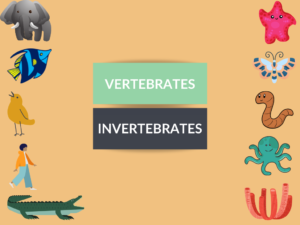Turtles vs. Tortoises: The Differences Explained
Turtles and tortoises are often used interchangeably, but they are two distinct creatures with unique characteristics and habitats. In this article, we will explore the differences between turtles and tortoises, their various examples, uses, and conclude with a summary of their dissimilarities.
What are Turtles?
Turtles are reptiles that belong to the Testudines order. They are known for their hard shells that provide protection against predators. Turtles are predominantly aquatic creatures, spending most of their lives in water bodies such as rivers, lakes, and oceans. They have streamlined bodies and webbed feet, which allow them to swim efficiently.
Examples of Turtles:
– Green sea turtle
– Leatherback turtle
– Loggerhead turtle
Uses of Turtles:
– Biodiversity indicators: Turtles are considered a crucial part of the ecosystem and can serve as indicators of environmental health and water quality.
– Research subjects: Turtles are often studied to gain insights into their longevity, reproductive patterns, and overall biology.
– Ecotourism: Many places offer turtle-watching tours, where tourists can observe turtles nesting or hatching.
What are Tortoises?
Tortoises are also reptiles but belong to the Testudinidae family. Unlike turtles, they are primarily land-dwelling creatures. Tortoises have heavier and larger shells compared to turtles, which provide protection against terrestrial predators. They are herbivorous and primarily eat grasses, leaves, and flowers.
Examples of Tortoises:
– Galapagos tortoise
– African spurred tortoise
– Greek tortoise
Uses of Tortoises:
– Conservation: Some species of tortoises are critically endangered, and efforts are being made to preserve their habitats and ensure their survival.
– Education: Tortoises are often kept in zoos and educational institutions to educate the public about reptiles and their conservation needs.
– Pets: Tortoises are popular pets for reptile enthusiasts due to their unique appearance and low maintenance requirements.
Differences between Turtles and Tortoises:
| Difference Area | Turtles | Tortoises |
|---|---|---|
| Habitat | Aquatic or semi-aquatic | Terrestrial |
| Shell Shape | Streamlined and flattened | Dome-shaped and heavier |
| Feet | Webbed for efficient swimming | Short and sturdy for walking |
| Diet | Varied: both herbivorous and carnivorous species exist | Primarily herbivorous |
| Life Span | Varies greatly between species | Can live for over 100 years |
| Lifespan | Varies greatly between species | Can live for over 100 years |
| Location | Found worldwide in both freshwater and marine habitats | Primarily found in terrestrial habitats, excluding some species |
| Activity Levels | More active and agile due to streamlined bodies and webbed feet | Less active and slower-moving on land |
| Reproduction | Most turtles lay eggs on land | Tortoises also lay eggs on land |
| Conservation Status | Some species are endangered | Certain tortoise species are critically endangered |
Conclusion:
Turtles and tortoises may share similar physical characteristics, but they differ significantly in terms of habitat, diet, behavior, and conservation status. While turtles are mainly aquatic and have streamlined bodies, tortoises are primarily land-dwelling and have more dome-shaped shells. Understanding these differences is essential to appreciate and protect these extraordinary reptiles.
People Also Ask:
Q: Can turtles live both in water and on land?
A: While turtles are primarily aquatic, some species, like the red-eared slider, can spend time on land as well.
Q: Do turtles and tortoises lay eggs?
A: Yes, both turtles and tortoises lay eggs on land, digging nests to protect their eggs until they hatch.
Q: Are turtles and tortoises endangered animals?
A: Many species of turtles and tortoises are endangered due to habitat loss, pollution, and illegal trade.
Q: Can turtles and tortoises be kept as pets?
A: Yes, turtles and tortoises can be kept as pets, but their care requirements and legal restrictions vary depending on the species.
Q: Are turtles and tortoises dangerous to humans?
A: In general, turtles and tortoises are not dangerous to humans unless provoked or mishandled. It’s essential to respect their space and observe them from a safe distance.



